Peleliu Headquarters
Colonel John S. Day, Assistant D-3
"As Assistant D-3, I landed with O. P. Smith just behind Gordon Gayle's 3rd Battalion 5th to set up the advanced division CP. We were just about the only Amtrac making it for the beach at the moment and I had a feeling that we were the sole target for the enemy mortars and artillery as the shells hit nearby. Made it to shore, however, without damage, met a sniper or two, discovered the site planned from the map was untenable, scouted for a new one and set up the CP in an anti tank ditch that ran parallel to and a few yards from the beach. A few days later we moved the CP into the enemy airport administration building that had been pretty badly battered by our navy's big guns. When I left with O. P. Smith and the rest of the Division rear echelon staff on November 1, the army had decided that out CP would be the advanced OP and they relocated their division CP back to Green Beach!"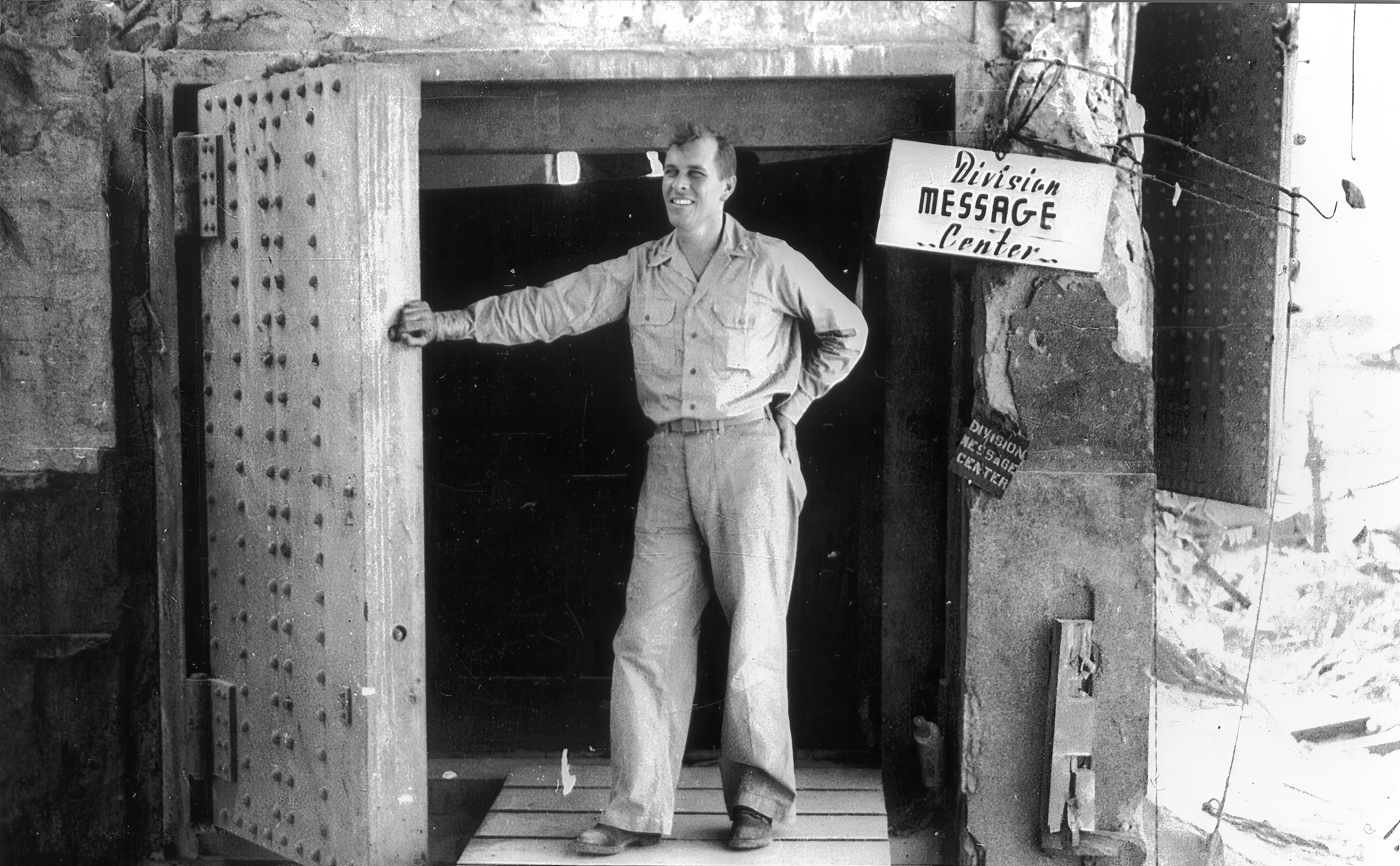
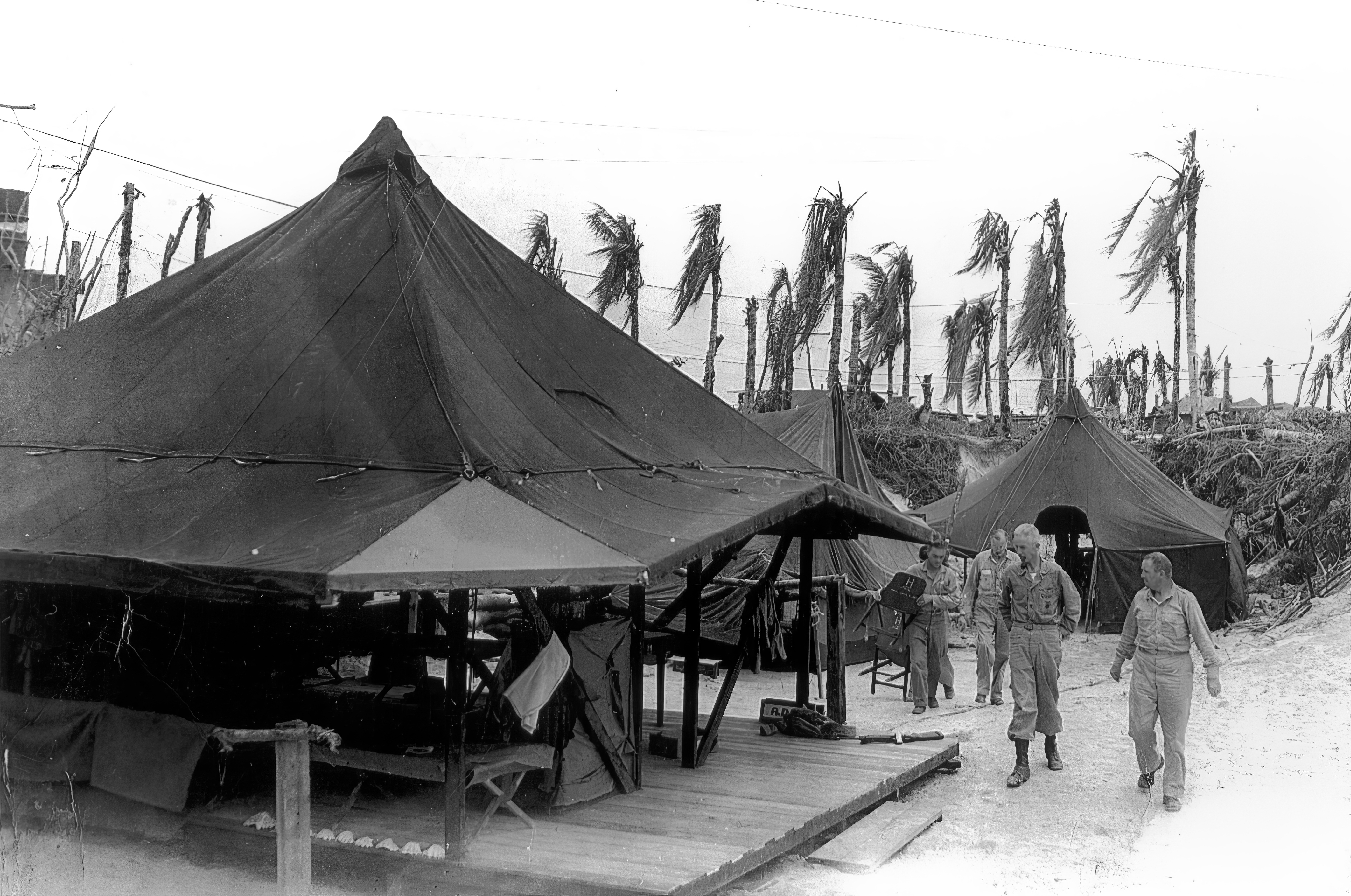
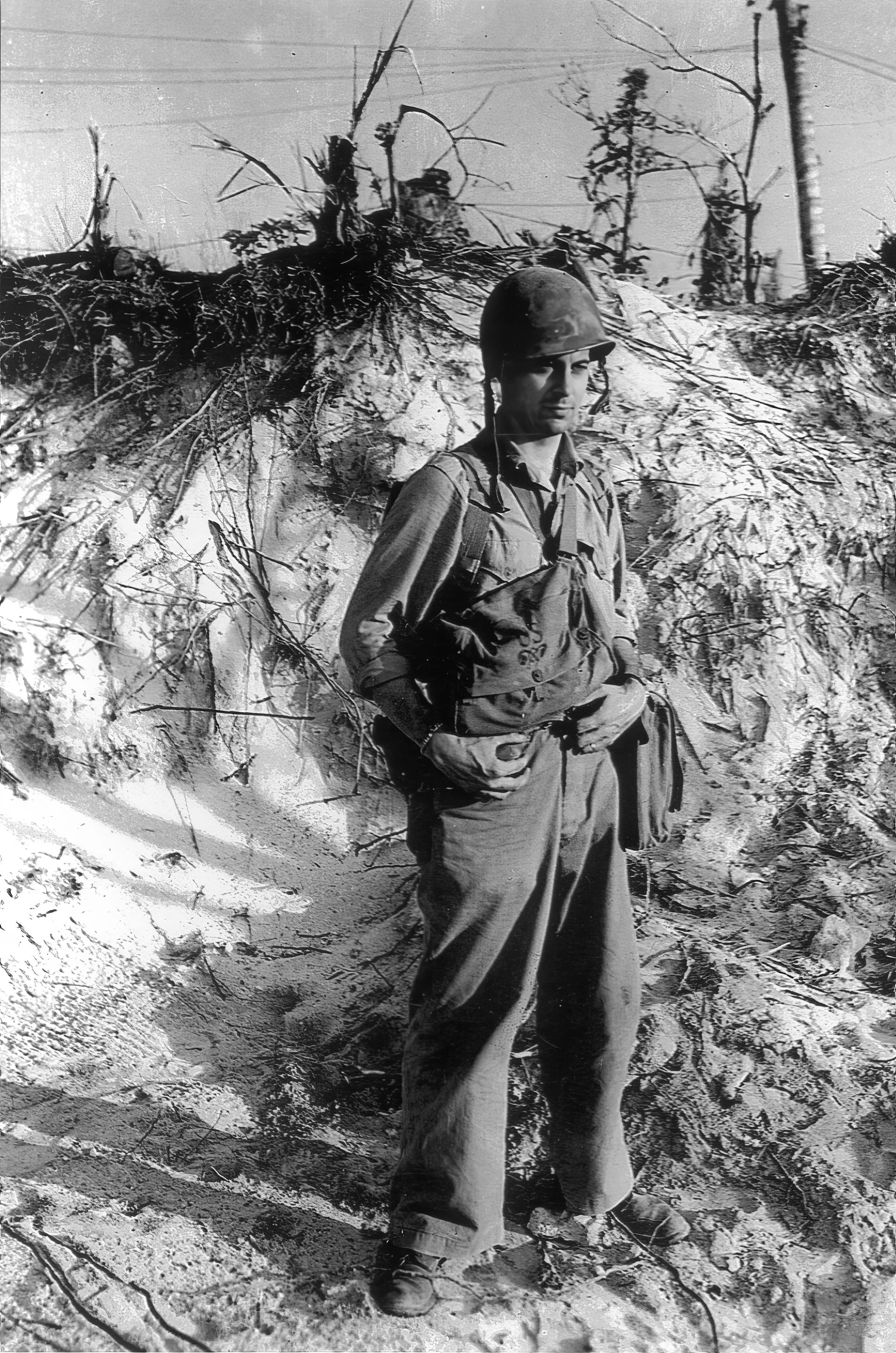
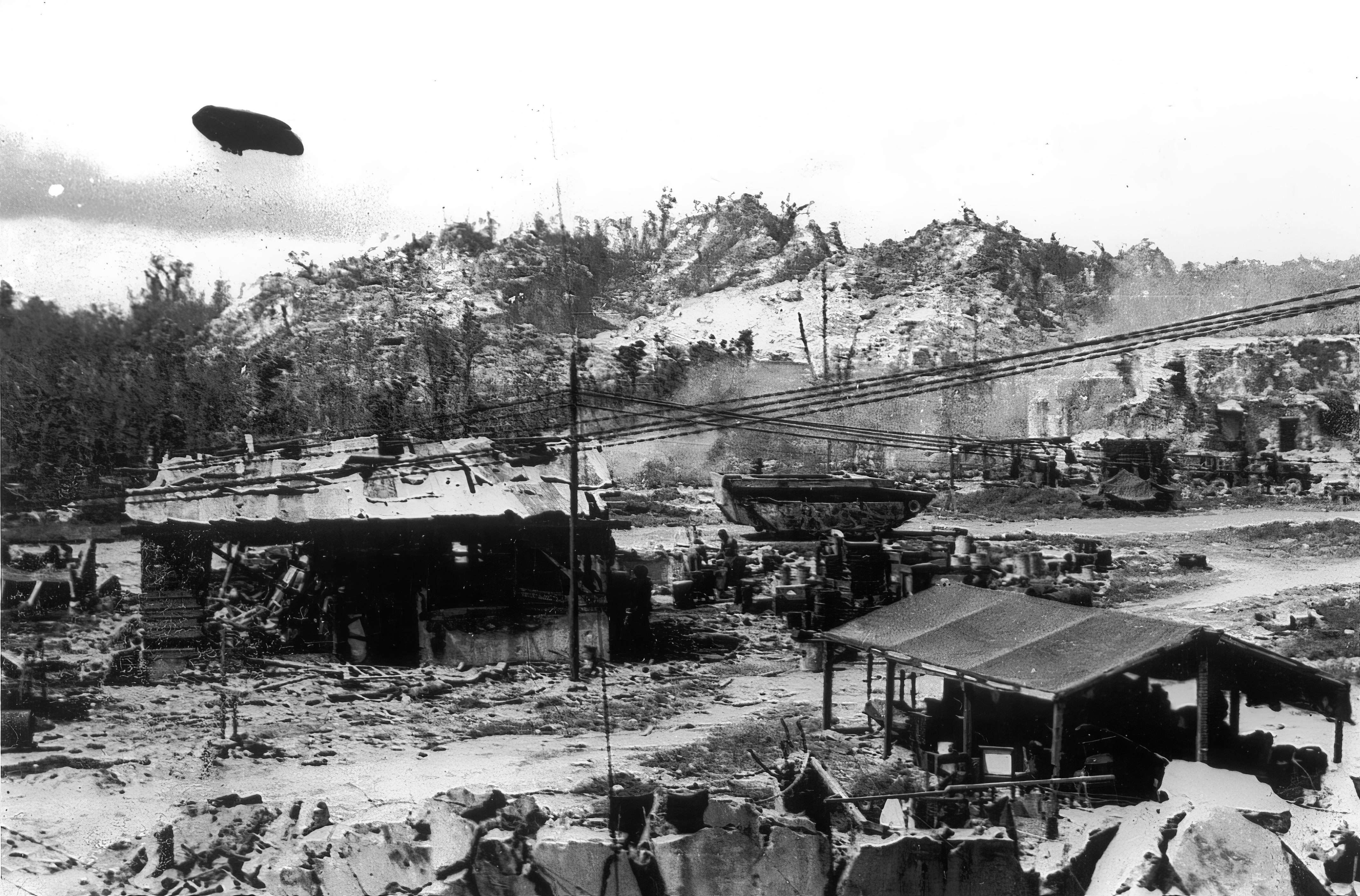
Eugene "Half Track" Stramel, H&S
"Our unit of HQ Battalion were assigned as stretcher bearers on Bloody Nose Ridge. One night after we had evacuated a number of wounded, we were holded up in a CP (Command Post) of 7th Marines. We were told to remain in the CP through the night. After a while, a non commissioned officer came to our three man team and asked for a volunteer. It seemed they needed one more Marine to fill a gap in the line for the night. The enemy were in caves all over the area and attacks were expected during the night. One volunteer was requested. We had always said, 'Never volunteer'. The three of us were scared and we froze. Beings I was the oldest and probably the senior of the three, I volunteering. It was a long night and the enemy emerged from the caves and it was a fierce night of battle. But I survived it all and by dawn I was called down to help evacuate some wounded Marines. The CP and the area all around was littered with dead Japanese and some Marines. The CP had been wiped out. As I looked for my two buddies, I found nothing. Both of them had been completely destroyed with many others. Later on we could only find bits of one, but nothing of the other."Sgt Robert E. Galer, 1st Radio Intelligence Platoon
This image is from a newspaper photo. The title of the photo read, "Jap Radio Set Brings Marines U.S. Broadcasts" and the caption read, "Marine communicators found this radio set which was left behind by the Japs on Guadalcanal, and use it to good advantage to listen in on U. S. broadcasts in their leisure time. The marines are (left to right) Corp. James Shadduck, Pvt. Alex N. Incinelli, Pvt. Robert Galer, Corp. Sidney B. Land and Pct. Arthur D. Roda."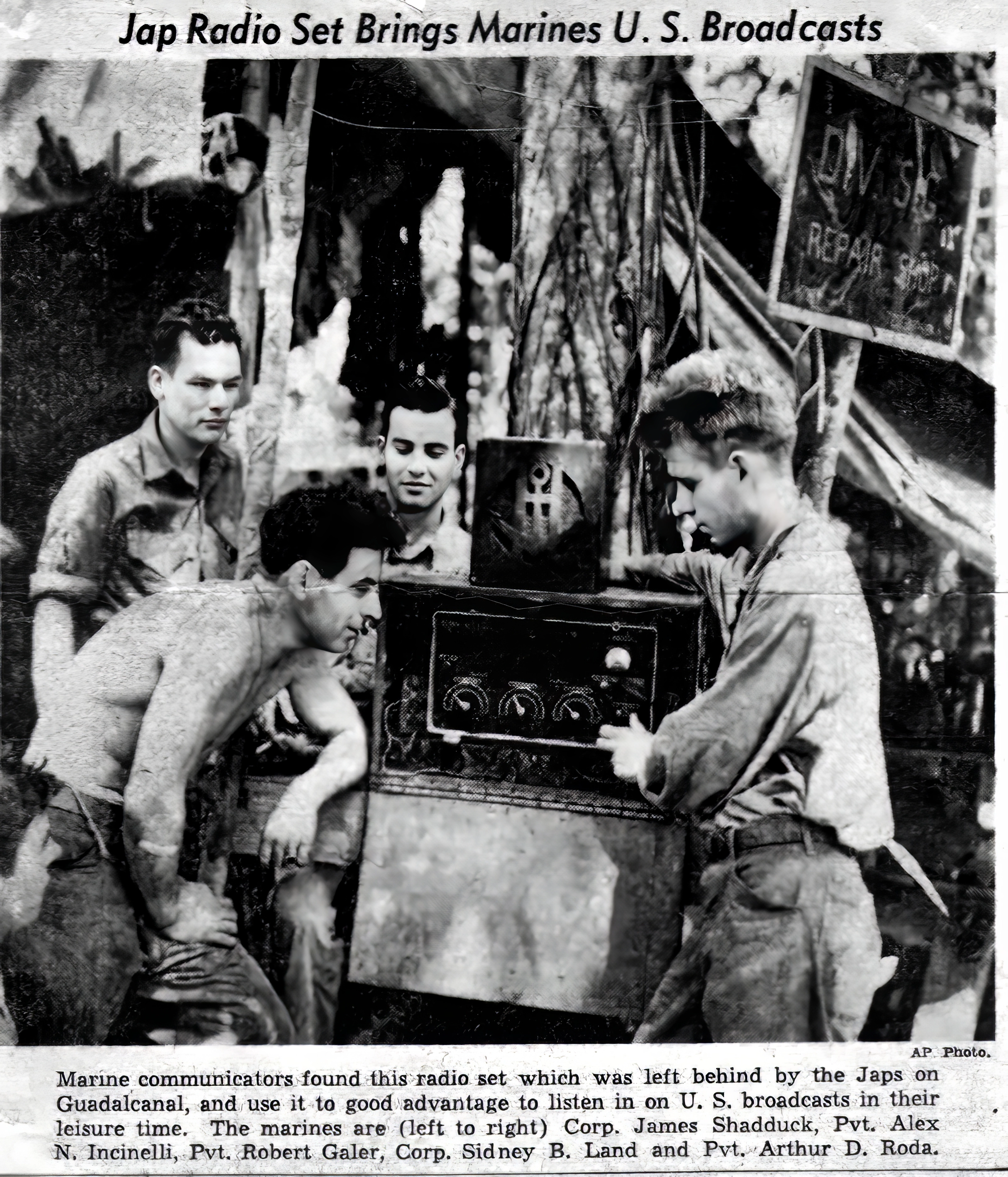
Bob Feist, 2nd Radio Intelligence Platoon
"I was at the ripe old age of nineteen when I hit the beach during the Peleliu Campaign, landing approximately 24 hours after the first wave attacked. The chaotic scene I encountered is vivid in my memory. Explosions seemed to be erupting everywhere, weapons of every caliber were chattering, and many dead, both U.S. and Japanese, lie strewn on the beach. A short distance from my landing site a dead Marine lay on top a tank, his body almost severed in the middle.Most of my five weeks-September 16 to October 21-spent on Peleliu involved menial tasks such as lugging ammunition and other supplies, digging fox holes, and doing guard duty. Any person on that small island during the invasion was in danger. Three of our members of the Second Radio Intelligence Platoon were killed by a mortar shell while they were unloading supplies at the beach. Eleven others were wounded by the explosion, some so seriously they could not return to duty and were discharged."